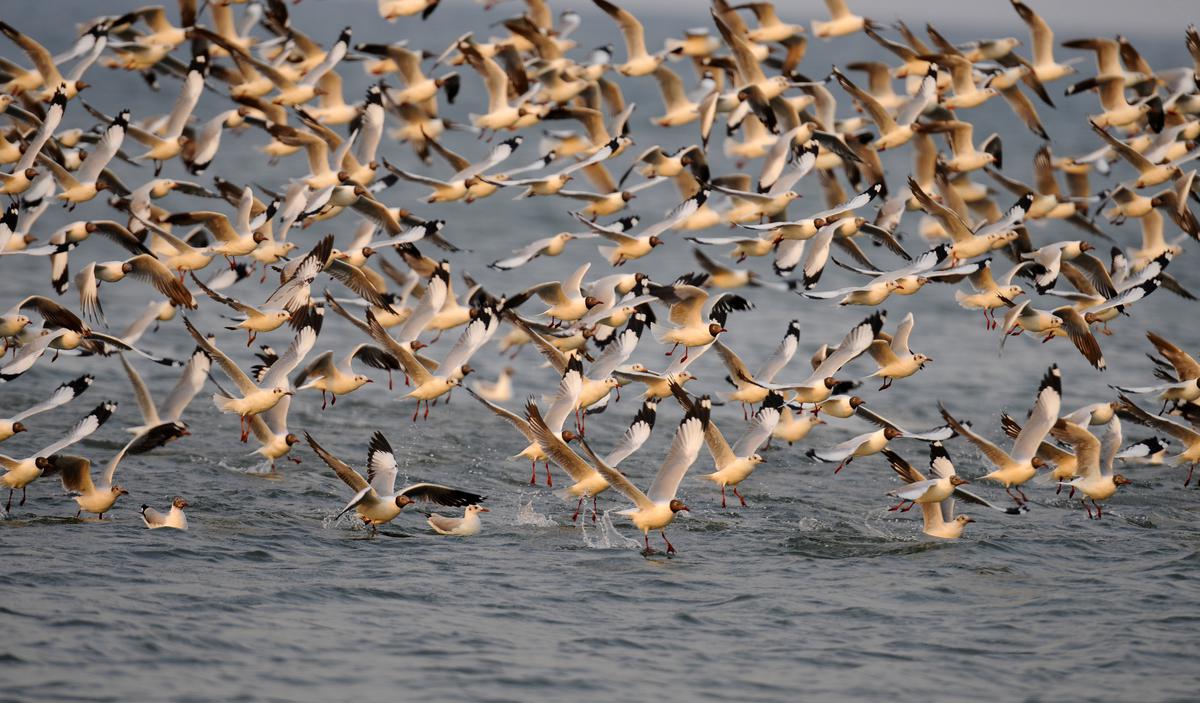
The birdwatchers of Visakhapatnam get busy as the winter visitors arrive
The Hindu
With the onset of birdwatching season, the birders of Visakhapatnam are geared up to visit the biodiversity hotspots in the vicinity
It was a balmy morning in Visakhapatnam when Imran Khan, a naturalist based out of the city, heard the unusual call of a bird while on a telephonic conversation with his mother who lives in Chinna Waltair. "The sound of the bird was not what we regularly hear from our surroundings. So when I asked my mother about it, she said a bird was making a nest on her balcony," he says. When he reached there, he was delighted to spot an Indian silverbill making a nest so close to the urban spaces. Many of the bird species like the Indian silverbill have adapted to the urban environment, building nests in unlikely nooks and corners of a house.
Some of these birds are native species and few winter visitors, who are finding a way to live – and sometimes to flourish – close to urban spaces. Warblers, bee-eaters, flycatchers and shrikes have cracked the code, adapting to an urban environment we inadvertently provide such as native plants in our gardens. "Urban birdwatching is a well-kept secret where you chance upon some delightful sightings in small green spaces in our vicinity. Visakhapatnam has many such areas to explore," says Imran, who recently took a group of nature lovers on a birdwatching trek to Kambalakonda.
With the onset of birdwatching season, the birders of Visakhapatnam are geared up to visit some of the hotspots in the vicinity. "Visakhapatnam has a long coastline and often migratory birds like gulls do stopover during their journey downward; these birds can be spotted at the fishing jetty of harbour as well as Mangamaripeta. During the recent past, we also spotted great knot, terek sandpiper and few other species on the north side of Bheemili beach as it is a secluded area," says Janardhan Uppada, a passionate birder and member of Vizag Birdwatchers Society.
A walk atop Kailasagiri Hill will also throw up many surprises. "We did find raptors like the peregrine falcon and amur falcon on the hilltops of Kailasagiri and Thotlakonda. Even though these are busy tourist places, one can find these raptors early in the mornings along with few other migratory birds like warblers, flycatchers and shrikes," adds Janardhan.
"Coastal Andhra Pradesh has two kinds of ecosystems that support the bird population - terrestrial habitats and coastal wetlands. In the recent past, there were quite a few interesting findings that delighted bird lovers of the region," says Anant Shankar, District Forest Officer. The seasonal sightings of more than 200 Indian skimmers, an endangered bird species on the International Union for Conservation of Nature (IUCN) list, on the northern side of Kumbabhisekham mudflat on the Kakinada coast have highlighted the need to conserve the critical ecosystems. "The creek is a couple of kilometres away from the Coringa Wildlife Sanctuary and falls in the Central Asian Flyway of migratory birds. With respect to the endangered Indian skimmer, it is spotted primarily in Chambal and Mahanadi river basins in India, which are the prime breeding grounds of the bird. It is being regularly spotted now in the Kakinada coast for its winter sojourn for feeding," says Shankar.Some of the other interesting findings of the season include the spotting of the green munia, a vulnerable species on the IUCN list, in the Maredumilli forest area in Andhra Pradesh.
"There are plenty of avian amigos dwelling around us such as the very tiny tailor birds, purple-rumped sunbirds to bulbuls and parakeets. Very interestingly, Visakhapatnam also holds a very good population of the Indian grey hornbills, barn owls which can be seen cruising through our suburbs at times. The transition between a vast area of protected forests and settlements led the avian communities to adapt accordingly. The orientation of the hillocks hosting tropical sub deciduous type vegetation along with thorny shrubs and sea on one side provides Visakhapatnam city to endorse a great avian assemblage to dwell within," says Yagnapathy Adari, project scientist, Kambalakonda Wildlife Sanctuary.
The flora also plays a very important role providing nesting and roosting sites to bird diversity.The Kambalakonda Wildlife Sanctuary in the heart of the city supports a wide range of avian communities. A few species that attract bird watchers include white-bellied sea eagle, oriental white eye buzzard, rufous tree pie, paradise flycatcher, pale-capped pigeon (vulnerable species), orange-headed thrush, brahminy kite, serpent eagle, red wattled lapwing, purple rumped sunbirds and winter migrants like greenish warbler.

Capt. Brijesh Chowta, Dakshina Kannada MP, on Saturday urged Union Finance Minister Nirmala Sitharaman to facilitate speeding up of ongoing critical infrastructure works in the region, including Mangaluru-Bengaluru NH 75 widening, establishment of Indian Coast Guard Academy, and merger of Konkan Railway Corporation with the Indian Railways.










